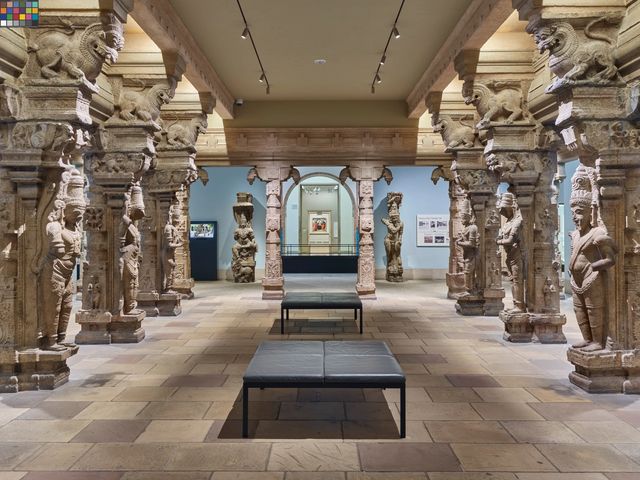The South Indian temple hall recreated inside the museum includes fifty-eight granite architectural elements from Madurai, Tamil Nadu, dating to the mid-1500s. In 1913, a honeymooning Philadelphia couple purchased these pieces from piles of architectural rubble lying around the small Madana Gopalaswamy Temple.
But recent research supports that most of the elements were created for the nearby Kudal Alagar Temple, where they had formed part of a shrine to the goddess Lakshmi, wife of the Hindu deity Vishnu. After the Lakshmi shrine became dilapidated, temple authorities dismantled it (c. 1907) and built its replacement on the same site (c. 1923).
In the museum’s recreated hall, the life-size figures that project from the main pillars depict deities and mythological characters. These pillars support lion brackets between which run stone reliefs showing scenes from the Ramayana, the epic tale of the hero-king Rama, one of Vishnu’s earthly incarnations. The small images on the hall’s many pillars include additional gods and heroes as well as humans (like an architect with his measuring stick).
Halls of Hindu temples in South India serve numerous ritualistic and community functions. At times, the deity embodied in stone in the temple’s inner sanctum takes up residence in a portable bronze icon which is brought into one of the temple’s halls. Priests then prepare the god for worship, gloriously adorning him or her in silk and gold saris donated by worshippers in return for the god’s blessing. The bronze god is then often paraded through the city.
